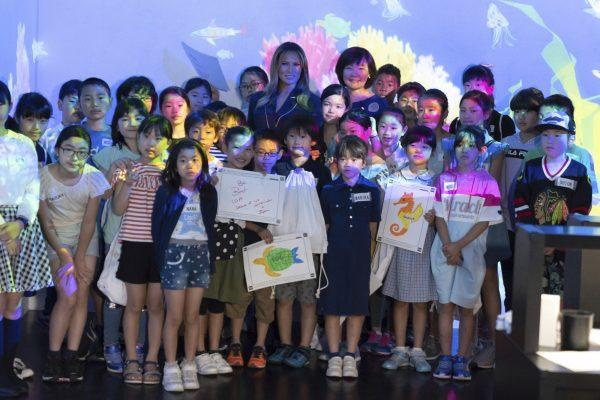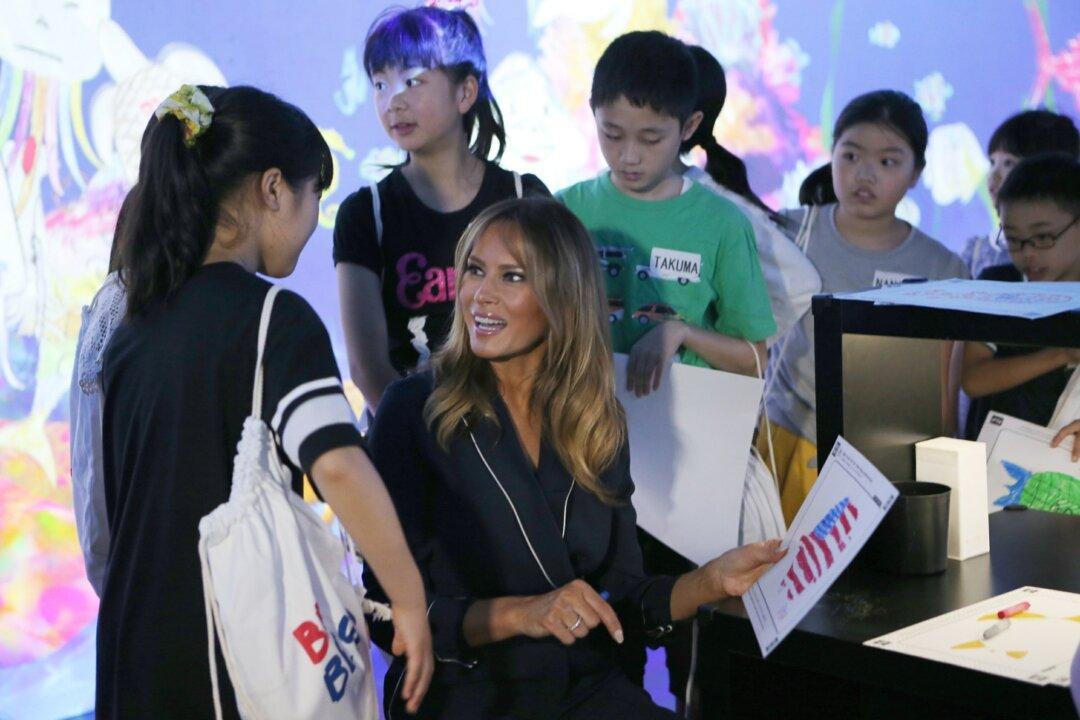TOKYO—Melania Trump was perfectly cool Sunday at an air-conditioned interactive digital museum in Tokyo where she drew a purple fish and had it projected on a digital aquarium, as she and her host, Japanese first lady Akie Abe, joined dozens of schoolchildren while their husbands played golf under the scorching sun.

U.S. First Lady Melania Trump poses with Akie Abe, center right, wife of Japanese Prime Minister Shinzo Abe, and children for a photo during a visit to a digital art museum in Tokyo, Japan on May 26, 2019. Pierre-Emmanuel Deletree/Pool Photo via AP





